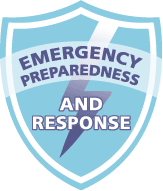Click here to learn more about the IPRO ESRD Networks (1, 2, 6 & 9).
|
|
|
REGISTER NOW: 5th Annual ANNA/IPRO ESRD New England Fall Meeting
On Tuesday, October 17, 2017, the ANNA Southern New England Chapter, along with the IPRO ESRD Network of New England will host an educational meeting at the Mohegan Sun Hotel & Conference Center in Uncasville, Connecticut.
This meeting is open to all members of the ESRD community: administrators, dietitians, nurses, patient-consumers, pharmacists, physicians, social workers, surveyors, technicians, and other interested health care professionals. The meeting provides an opportunity for you and your colleagues to network, share ideas, and celebrate community successes.
Save the Date Flyer
(please share with colleagues)
Registration is now open. Click here to register online.
- $85 for registration completed by August 13, 2017
- $90 for registration completed by September 10, 2017
- $100 for registration completed by October 8, 2017
- $125 for registration completed on-site on October 17, 2017
When paying by credit card, online, there will be a $3.00 transaction fee (in addition to the attendee fee) to process your payment.
|
|
|
Does Your Facility Encourage Self-Cannulation? Centers for Medicare & Medicaid Services (CMS) Conditions for Coverage
Did you know that some patients overcome needle fear by training to cannulate themselves?
Self-Cannulation: A Patient Right and CMS Expectation for Interested and Trained Patients
, discusses the CMS Conditions for Coverage, and cites the relevant conditions and interpretive guidelines. The blog post was written by Beth
Witten, MSW, ACSW, LSCSW to dispel any concerns that dialysis clinic staff might have about a patient's right to be trained and perform self-cannulation.
|
|
August is National Immunization Awareness Month (NIAM)
 One of the Network's priorities is to support facility staff in ensuring that patients receive appropriate vaccinations.
One of the Network's priorities is to support facility staff in ensuring that patients receive appropriate vaccinations.
The Centers for Disease Control and Prevention (CDC) provides vaccination recommendations for ESRD patients in the
CDC's Morbidity and Mortality Weekly Report (MMWR); two of the recommended vaccines (pneumococcal pneumonia and hepatitis B) are a focus of one of the Network's quality improvement activities.
According to the CDC, approximately 18,000 patients
die each year from pneumococcal disease, and treatment with antibiotics is becoming less effective, due to drug resistant bacteria. Hepatitis B is a serious disease that affects the liver, with 2,000 to 4,000 patients dying from cirrhosis or liver cancer each year. Vaccines offer a safe and effective way for individuals to protect themselves from serious illness. Please use the information in the resources below as talking points for conversations with your patients and your staff members regarding the importance and the benefits of vaccinations.
Vaccinations and antibodies are tracked in CROWNWeb, and facility vaccination rates are reported to the Centers of Medicare & Medicaid Services (CMS).
For additional information/resources on National Immunization Awareness Month (NIAM):
For CDC Vaccine Information Statements (VIS):
|
|
Beyond Patient Centered Care: Self Care
"Over the past 20 years, health care as a whole has been moving toward
the patient-centered care-end of the spectrum.  What's the next
step? Care that is truly delivered by patients themselves."
In the dialysis unit, staff members can promote patient self-management techniques, from hand washing to self-cannulation and self-management. A recent Harvard Business Review article,
The Value of Teaching Patients to Administer Their Own Care
, includes an example of a self-care dialysis program at the Central Texas Nephrology Associates (CTNA) clinic in Waco, Texas. Below are a few excerpts from the article, and links to videos and additional information on the Institute for Healthcare Improvement's website,
www.ihi.org
. What's the next
step? Care that is truly delivered by patients themselves."
In the dialysis unit, staff members can promote patient self-management techniques, from hand washing to self-cannulation and self-management. A recent Harvard Business Review article,
The Value of Teaching Patients to Administer Their Own Care
, includes an example of a self-care dialysis program at the Central Texas Nephrology Associates (CTNA) clinic in Waco, Texas. Below are a few excerpts from the article, and links to videos and additional information on the Institute for Healthcare Improvement's website,
www.ihi.org
.
- "In 2016, nearly 40% of CTNA's 751 patients performed their own dialysis while experiencing fewer hospitalizations and a lower mortality rate than patients receiving dialysis the conventional way. Patients delivering their own dialysis experienced better outcomes and the health system minimized costs by avoiding unnecessary hospital visits."
- "Providers' role changed from performing every step of the process to serving as coaches and supporters of patients doing their own care. The resulting redeployment of staff resources led to higher productivity throughout the clinic."
- "Patients (or caregivers...) must be prepared and willing... Care organizations need to develop a standard process for training patients... Practitioners must be trained to support patient-administered care ... to see themselves as coaches and the patient as an integral partner. ...[to] recognize that patients' capabilities to provide their own care may differ and evolve over time, and ...to connect with the patient..."
- "A standard protocol should be developed [including] ...methods for distributing equipment, supplies, and medication ... [and] how patients and providers should respond to adverse events. ...easy access to outpatient and inpatient services to address any needs that arise."
- "A care organization that has a value-based-payment system will have a much easier time adopting the self-care model ...Patient-administered care realizes savings by avoiding spending in the first place; in a fee-for-service model, this is lost revenue."
|
New Patient Guide for Emergency Preparedness 
|
|
Free CME Training to Educate Providers about the HIPAA Right of Access
The U.S. Department of Health & Human Services (HHS) has created a free video training module,
Helping Entities Implement Privacy and Security Protections, for healthcare providers on patients' right of access under the HIPAA Privacy Rule. The video provides an in-depth review of the components of the HIPAA right of access and ways in which it enables individuals to be more involved in their own care. It also provides helpful suggestions about how healthcare providers can integrate aspects of the HIPAA access into medical practice. Continuing medical education (CME) credit for physicians and continuing education (CE) credit for healthcare professionals are available.
HIPAA Resources:
https://www.hhs.gov/hipaa/index.html
|
End-Stage Renal Disease (ESRD) Quality Incentive Program (QIP) Payment Year (PY) 2018 Preview Period

The PY 2018 Preview Period
is scheduled to end on August 18, 2017, at 11:59 PM Pacific Time. The Preview Period provides each facility the opportunity to review and ask questions about its ESRD QIP scores and any potential payment reductions.
During the Preview Period, facility points of contact (POC) may use the ESRD QIP system to ask clarification questions and systemic clarification questions, as well as submit a single formal inquiry in the event that the facility believes its scores were not calculated correctly. Please note that only the Preview Patient List Reports (PLR) can be run during the Preview Period. The Final PLRs will be populated once scores have been finalized.
If you have questions or concerns regarding the use of the ESRD QIP system, please contact the QualityNet Help Desk at
[email protected]
(866) 288-8912 (7:00 AM to 7:00 PM Central Time from Monday through Friday). If you have any questions or concerns regarding the program, please contact the ESRD QIP team at
[email protected].
|
CMS Extends Submission Deadline: Pain Assessment and Follow-Up Reporting
CMS has announced the extension of the data submission deadline for the first reporting period of the Pain Assessment and Follow-Up Reporting Measure
, in CROWNWeb,
from
July 31, 2017
to
August 31, 2017 at 11:59 PM ET
in support of the ESRD Quality Incentive Program (QIP) Payment Year (PY) 2019.
If you have any questions or concerns, please contact the ESRD QIP team at
[email protected]
.
|
NHSN Dialysis Event Surveillance Protocol: CE Available
The CDC recently hosted webinars that provided a complete introduction to the National Healthcare Safety Network (NHSN) Dialysis Event reporting requirements and the surveillance definitions necessary to complete accurate monthly reporting. NHSN Dialysis Event Surveillance reporting is required for the CMS ESRD Quality Incentive Program (QIP).
|
Avoid Security Incidents: Personally Identifiable Information (PII) and Protected Health Information (PHI)
ESRD Networks follow security policies and procedures, as required by the CMS, to protect patient information and prevent data security breaches. CMS defines a security breach as the loss of control; compromise; unauthorized disclosure, acquisition or access; or any situations in which persons other than authorized users--and for other than authorized purposes--have access or potential access to personally identifiable information, whether physical or electronic.
Data security breaches occur when Patient Identifiable Information (PII) or Protected Health Information (PHI) is inappropriately exposed. Examples of data security breaches include sharing of an individual's Social Security number (PII) or clinical diagnosis (PHI), such as ESRD, with unauthorized individuals or systems. Data security breaches can include, but are not limited to, PII or PHI sent via email; left unattended on a desk, fax machine, printer; or visible on a computer monitor.
With the frequent use of the web-based ESRD data-collection system, CROWNWeb, the potential for security breaches is great. It is essential for dialysis facilities to protect PII and PHI by implementing reasonable and appropriate physical and administrative safeguards for the processing and transmission of critical data.
Helpful Tips:
- Develop policies and procedures to ensure protection/secure transmission of PII and PHI.
- Do not send PII or PHI data using "Internet" email. Many dialysis organizations have an "Intranet," which may provide a safe way to send patient information.
- When emailing the Network, check to make sure no PII or PHI is included before you click "send."
- CMS has approved sending in emails CROWNWeb Unique Patient Identifiers (UPI). Use of the UPI to identify a patient when communicating with the ESRD Network is considered a best practice.
For CMS security resources, go to
https://qionet.sdps.org/training_resources/Security%20Resources.shtml
|
|
IPRO End-Stage Renal Disease Network of New England, the ESRD Organization for Connecticut, Maine, Massachusetts, New Hampshire, Rhode Island, and Vermont, prepared this material under contract with the Centers for Medicare & Medicaid Services (CMS), an agency of the U.S. Department of Health and Human Services. The contents presented do not necessarily reflect CMS policy. CMS Contract Number: HHSM-500-2016-00019C.
|
IPRO ESRD Network of New England
1952 Whitney Avenue, 2nd Floor, Hamden, CT 06517
PH 203-387-9332 · FAX 203-389-9902
[email protected]
|
|
|
|
|